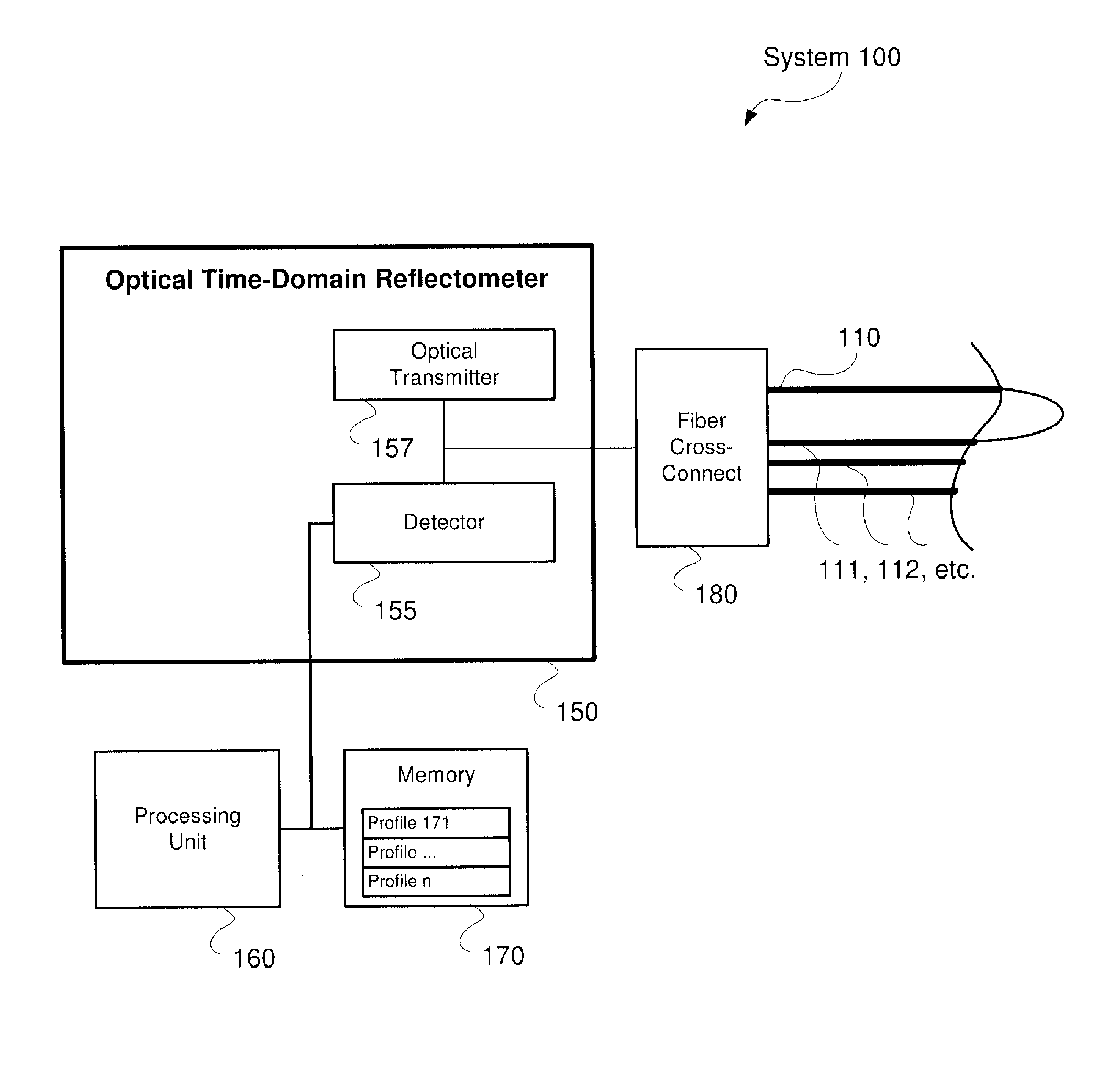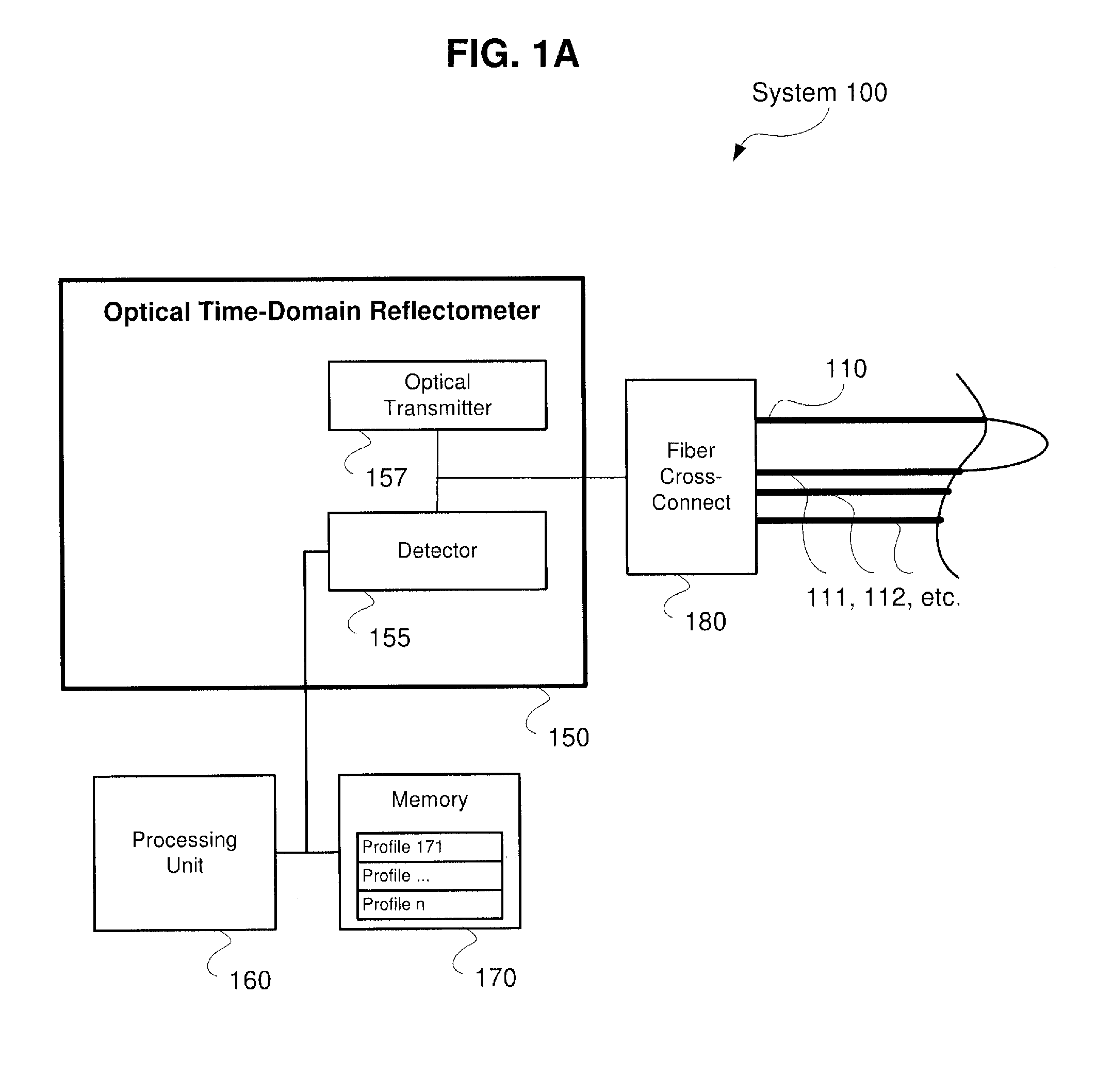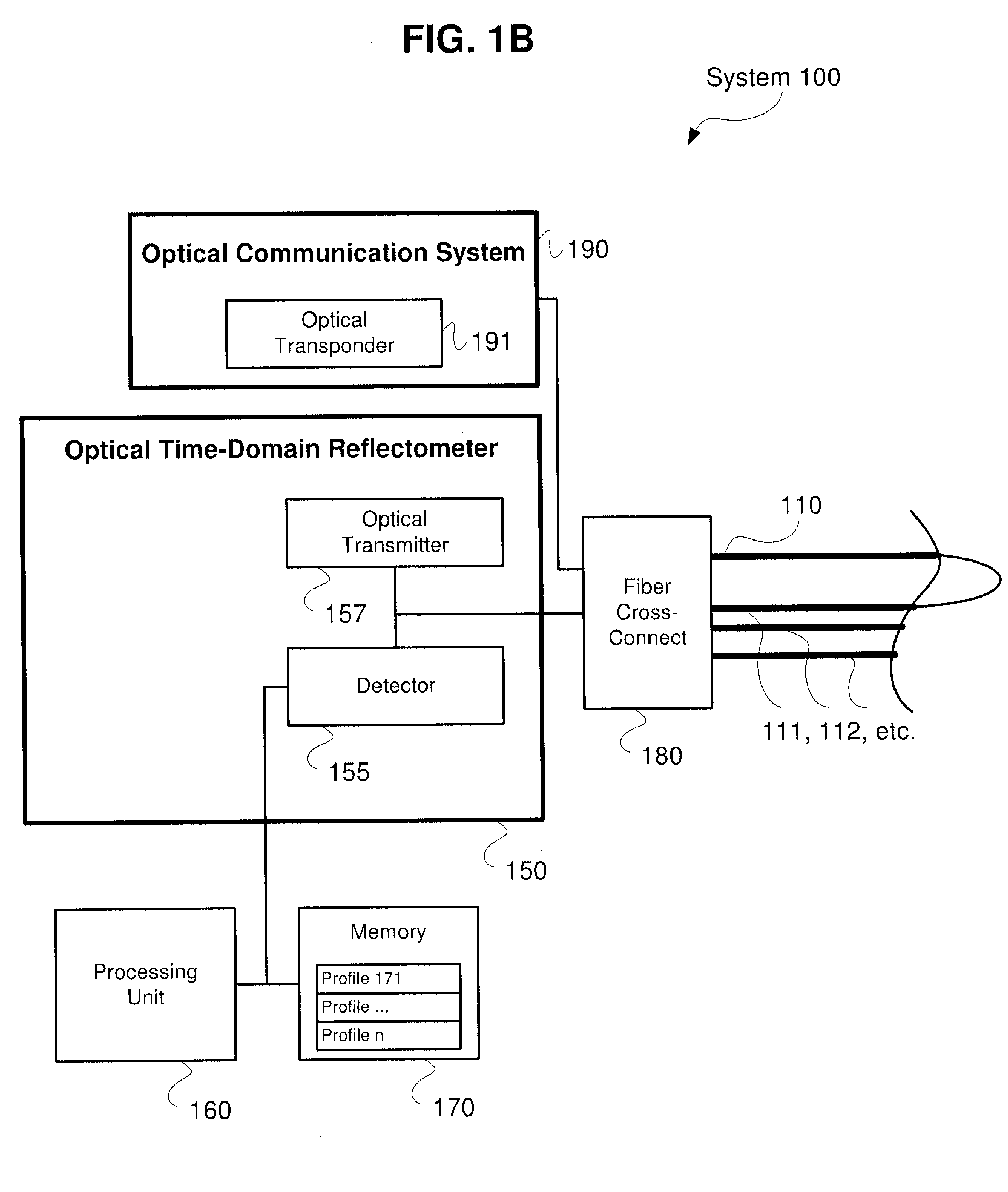Fiber Identification Using Mode Field Diameter Profile
a fiber identification and mode field technology, applied in the field of fiber identification using mode field diameter profile, can solve the problems of prone to human error in conventional identification and verification of specific fibers within a network, costly faults or failures in fibers,
- Summary
- Abstract
- Description
- Claims
- Application Information
AI Technical Summary
Problems solved by technology
Method used
Image
Examples
Embodiment Construction
[0008]The exemplary embodiments may be further understood with reference to the following description and the related appended drawings, wherein like elements are provided with the same reference numerals. The exemplary embodiments are related to systems and methods for uniquely identifying, or “fingerprinting,” optical fibers based upon measurements from an optical time-domain reflectometer (“OTDR”). These measurements may include various characteristics of the tested fiber, such as the relative backscatter, which may be described as a measure of the variation in the mode field diameter (“MFD”) of the fiber. It should be noted that within the field of fiber optics, a MFD reading may be defined as an expression of distribution of the irradiance, or the optical power per unit area, across an end face of a tested fiber.
[0009]Conventional identification of a particular fiber within a network office has been accomplished by tracing fiber jumpers. Furthermore, these conventional methods ...
PUM
 Login to View More
Login to View More Abstract
Description
Claims
Application Information
 Login to View More
Login to View More - R&D
- Intellectual Property
- Life Sciences
- Materials
- Tech Scout
- Unparalleled Data Quality
- Higher Quality Content
- 60% Fewer Hallucinations
Browse by: Latest US Patents, China's latest patents, Technical Efficacy Thesaurus, Application Domain, Technology Topic, Popular Technical Reports.
© 2025 PatSnap. All rights reserved.Legal|Privacy policy|Modern Slavery Act Transparency Statement|Sitemap|About US| Contact US: help@patsnap.com



